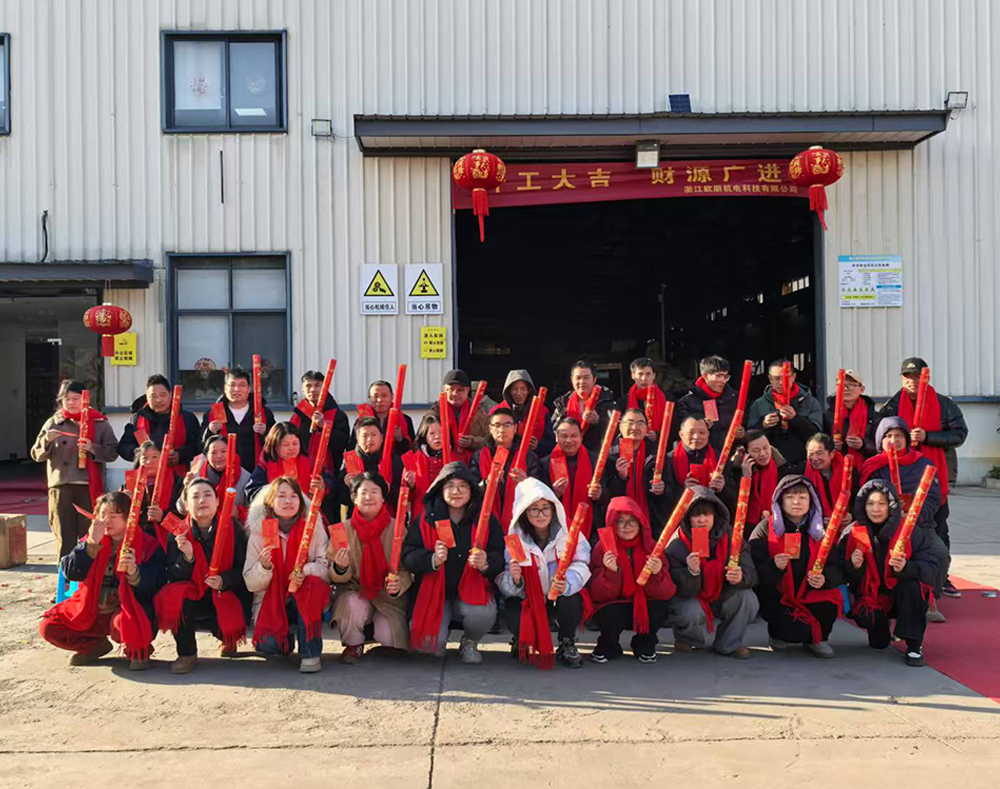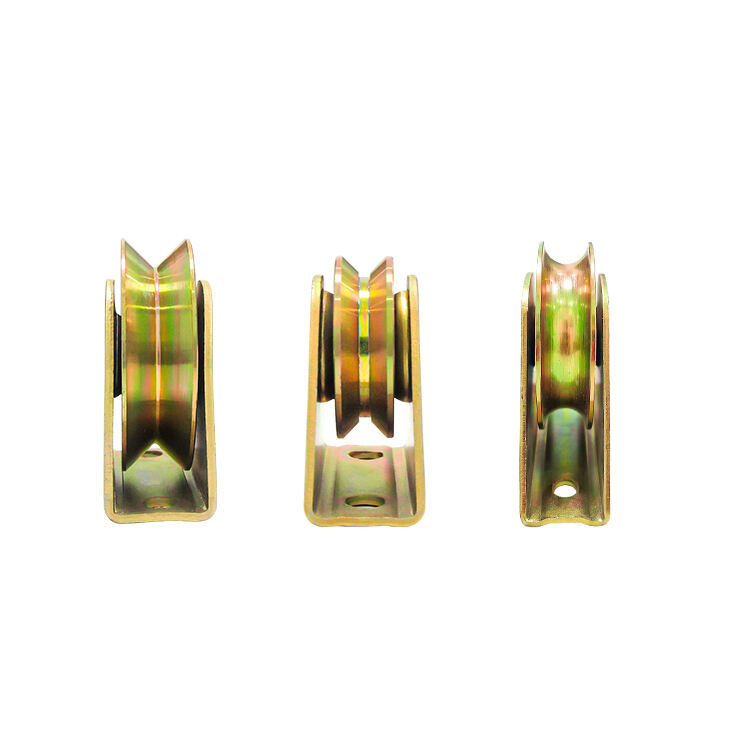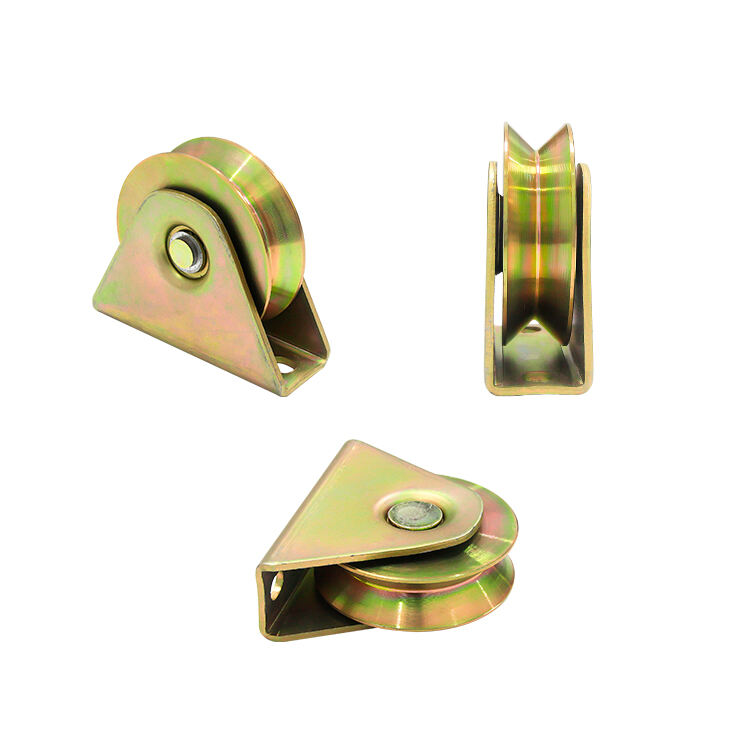Essential Components of Iron Metal Pulleys for Sliding Gates
Bracket Materials: Cold-Rolled vs Hot-Rolled Iron Plates
Choosing between cold rolled and hot rolled iron plates makes a real difference when it comes to how strong and durable sliding gates will be over time. Cold rolled iron gets worked while still cool, so it ends up with better measurements and a much smoother finish on the surface. That's why many people prefer it for projects where looks matter. Hot rolled iron works differently though since it's formed at very high temps, which makes it cheaper for tougher jobs because of how it handles stress. When building those gate brackets, cold rolled sheets actually stand out with their extra strength and cleaner look, something that matters a lot for keeping pulley systems stable year after year. Most manufacturers know this already, and they find that picking the proper material upfront saves money down the road as there's simply less wear and tear needing repairs later on.
Roller Composition: Medium-Carbon Steel Advantages
When making rollers for sliding gate pulleys, medium carbon steel stands out because it strikes just the right mix between being hard enough to last and flexible enough to handle stress without breaking. What makes this material so good? Well, it resists wearing down even when subjected to heavy loads day after day. Compared to other steels on the market, medium carbon steel really shines in situations where gates get used constantly and need something tough enough to stand up to regular operation. Real world tests show these rollers can take quite a beating while maintaining their shape and function. For property owners looking at long term expenses, switching to medium carbon steel rollers means fewer breakdowns and less money spent replacing worn parts over the years. The initial investment pays off through reduced maintenance headaches and unexpected repair bills down the road.
Durability Factors in Heavy-Duty Sliding Gate Systems
Bearing Types for Smooth Gate Operation
When it comes to heavy duty sliding gate systems, picking the right bearings makes all the difference in how smoothly everything works. Most installations use three main types: ball bearings, tapered roller bearings, and needle bearings, each good for different situations. Ball bearings work great because they cut down on friction, so they're often chosen for gates that don't carry too much weight. Tapered roller bearings take the cake when dealing with heavier loads since they can manage both side to side and straight down pressure at the same time. Needle bearings are another option worth considering, especially where space is tight but still needing something strong enough to last. Getting this part right really matters for gate performance. The wrong bearing can create unnecessary drag while the right one lets the gate glide along with minimal effort required from the motor or operator.
The amount of upkeep needed differs between different kinds of bearings and affects how long a sliding gate system will last. Ball bearings tend to be pretty low maintenance while needle bearings often need oiling on a regular basis to stop them from wearing out too fast. Industry data indicates that picking the wrong type of bearing or not taking care of it properly leads to more breakdowns, which means higher repair bills and shorter service life for gates. Getting familiar with what each bearing does and how much attention they need makes all the difference when trying to get good results from heavy duty gate installations over time.
Rivet Quality Impact on Structural Integrity
The quality of rivets plays a critical role in keeping heavy duty gate systems intact over time. Good rivets come from solid materials and proper manufacturing techniques that result in strong, lasting connections between components. When rivets aren't up to standard, serious problems can occur. Gates might suddenly give way or develop dangerous weak spots. We've seen cases where substandard rivets either used poor grade metals or came from factories lacking proper inspection protocols simply couldn't handle normal operational stresses. These faulty fasteners lose their ability to support weight properly and eventually break apart, which puts entire gate assemblies at risk of collapse during routine use conditions.
When picking out good quality rivets, material choice matters a lot. Stainless steel or those high strength alloys work best because they stand up to wear and tear while resisting rust over time. Many folks forget this basic point when budget shopping for hardware. Manufacturing standards matter too. If a factory isn't following proper protocols during production, even decent materials won't perform well in the long run. Industry pros know bad rivets can spell disaster for any project. We've seen gates fail completely because someone cut corners on this seemingly minor component. Properly spec'd rivets keep structures intact and save money down the road by avoiding expensive fixes later on. For anyone working with heavy duty sliding gates, getting serious about rivet selection isn't just recommended it's absolutely necessary for both safety and performance reasons.
Specialized Applications of Iron Pulley Systems
Cantilever Gate Kit Compatibility Considerations
Cantilever gates don't need those annoying ground tracks, which makes them great for places with rough terrain or spots where dirt and junk tend to pile up over time. The whole thing works thanks to a balancing mechanism that holds the gate up so it doesn't drag along the floor when moving back and forth. Sometimes problems pop up when trying to hook these gates up with old fashioned iron pulleys. Usually this happens because the weight isn't distributed right or there's too much resistance somewhere. Most gate makers suggest getting special cantilever gate packages that fit properly with whatever pulley system is already installed. These kits help everything run smoothly even though there are no tracks digging into the ground. We've seen these work really well in factories and warehouses where regular track systems just wouldn't cut it because of all the machinery around or constant vehicle traffic.
Automatic Sliding Gate Opener Integration
Automatic sliding gate openers come in various models designed for specific weights and speeds depending on what they need to handle. Adding an iron pulley system makes things run smoother for longer periods without so much wear and tear. When installing these systems, there are some important factors to keep in mind first. Check if the motor has enough power to move the actual gate weight it needs to carry. Also look at safety stuff like sensors that stop the gate when something gets in the way, plus those emergency handles people can use manually if needed. Getting remote control options working right matters too because nobody wants to walk all the way back just to open their gate. Most manufacturers will tell anyone reading their manuals that checking everything works together properly before installation is really important stuff. Taking time upfront to plan everything out means fewer headaches later on and better performance from those automated gates in the long run.
Material Selection Guide for Gate Track Systems
Heavy-Duty Sliding Door Roller Requirements
Heavy duty sliding door rollers come with certain specs that need checking before installation. They gotta be able to take on serious weight loads, which really depends on how big the gate is and what it's made from. Choosing the right ones matters because they should hold up under all that weight and keep going strong even after years of constant use. What the roller is made from makes a real difference in how long it lasts. Steel options tend to be popular choices since they don't wear down as fast and can handle those tough jobs where regular materials would fail.
When picking out the right roller for a particular job, there are several things worth thinking about first. Look at what kind of weight the roller needs to handle, where it'll be installed, and how much it'll actually get used day to day. A good shopping list would probably cover checking if the roller works well with whatever gate it has to move around, making sure the materials can take stress without breaking down, and deciding if extra protection layers make sense for longer life. From what we've seen in actual installations, steel and nylon tend to stand out when things get tough because they just don't wear out as fast and need less fixing over time compared to other options.
Corrosion Resistance in Outdoor Environments
Sliding gates left outside face serious corrosion problems over time. The main culprits? Moisture from rain and humidity, salt air near coastal areas, plus all sorts of industrial chemicals floating around in urban environments. These factors work together to wear down gate tracks and rollers much faster than expected. When looking at solutions, material selection matters a lot. Most installers go for stainless steel because it stands up well against rust, though galvanized steel works too if budget allows. Some folks opt for specific aluminum alloys that resist corrosion better than regular aluminum does. Beyond materials, there's also the option of adding protective layers like powder coating treatments or even special anti-corrosion sprays available on the market today. These extra steps can make a big difference in how long those expensive gate components actually last before needing replacement.
Keeping maintenance routines up to date makes all the difference when it comes to fighting off corrosion problems. Inspecting equipment regularly, scrubbing away grime with the right chemicals, and coating surfaces with protective inhibitors goes a long way toward cutting down on rust issues. Industry reports consistently show that sticking to basic preventive care extends the lifespan of those heavy duty gate tracks by months if not years. Outdoors is where this really matters though since gates exposed to weather take a beating day after day. Without proper upkeep, what starts as minor surface damage can quickly turn into major structural failures that compromise both safety and functionality for anyone relying on access control systems.
Performance Optimization Strategies
Lubrication Techniques for Metal Pulleys
Keeping metal pulleys properly lubricated makes all the difference when it comes to getting good performance out of sliding gate systems while cutting down on friction problems. Different kinds of lubricants exist on the market today including oils, greases, and those special dry varieties too. Each has its own advantages depending on what works best for particular situations. Oils tend to give really smooth movement but need topping up more often than not. Grease stays put much better though and lasts longer between applications. Regular maintenance matters a lot here so don't forget to apply whichever lubricant fits your setup right. Adjust how much and how frequently based on just how much the gates get used daily plus whatever weather conditions they face over time.
Most industry pros will tell anyone who asks that getting the lubrication right makes all the difference when it comes to extending the life of those metal pulleys and keeping heavy duty sliding gates running smoothly. Take John Doe for instance, he's been working on gate systems for decades now and knows what he's talking about. He puts it this way: "When done regularly and properly, lubrication basically creates a protective barrier that stops those annoying wear issues from developing, so everything keeps working consistently for years." Stick to good lubrication habits and metal parts last much longer than they otherwise would. That means fewer replacements down the road and automatic sliding gates that just keep performing reliably without unexpected breakdowns or maintenance headaches.
Load Capacity Matching for Different Gate Sizes
Getting the right match between load capacities and gate sizes matters a lot if we want to keep sliding gate systems running without breakdowns. When there's a mismatch, components get stressed beyond what they can handle, which means parts wear out faster than expected. The solution? Proper calculation of needed load capacity based on standard formulas that look at both gate dimensions and its total weight. Most experienced installers know that following manufacturer specs isn't enough. They usually apply a safety margin too, often doubling the calculated requirement or adding at least 50% extra capacity just to be safe. This buffer accounts for unexpected variables like wind resistance or uneven ground conditions that might affect performance over time.
Gates that are properly matched to their load requirements tend to last longer and cause fewer headaches down the road according to various field reports. Take one factory for instance they saw maintenance expenses drop by around 30 percent once they adjusted all their gates to handle the right amount of weight. Following guidelines from groups like ANSI and OSHA isn't just good practice it actually makes these sliding gate systems safer and more dependable in real world conditions. Getting the load capacity right from the start remains crucial for anyone wanting to avoid costly breakdowns later on.




